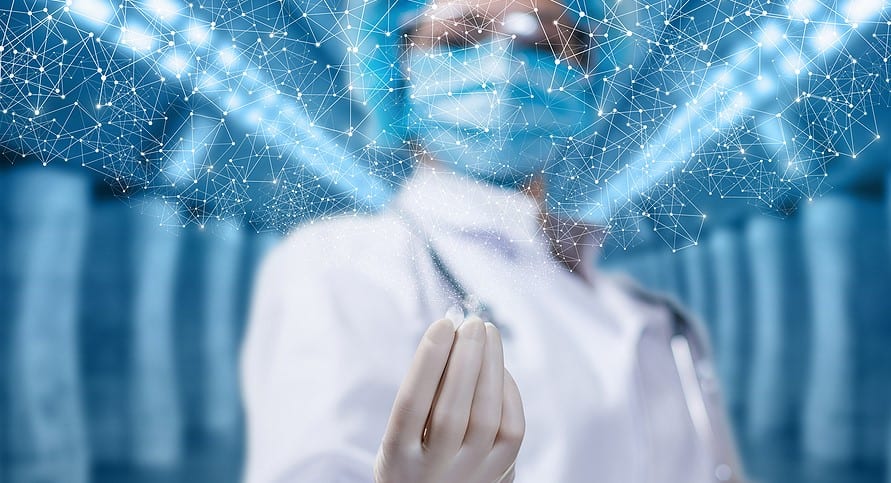
We are in the midst of a historic pandemic. The recent announcements from Pfizer and BioNTech and Moderna regarding their COVID-19 vaccine candidates are incredibly encouraging and offer a glimmer of hope in the fight against COVID-19. They also underscore the critical role of the life sciences in addressing the world’s greatest unmet medical needs. However, this pandemic will not be the last public health crisis of our time. Antimicrobial resistance (AMR) is an immense global health threat – in the United States alone there are at least 2.8 million antibiotic-resistant infections that occur each year, resulting in more than 35,000 deaths, according to the Centers for Disease Control (CDC). Antimicrobial resistance is not new, and while it has not received the same attention as the outbreak of COVID-19, it demands the same unified, mobilized response.
Classified as one of the top 10 global health threats facing humanity, AMR is defined by the FDA as “the ability of a microorganism (bacteria, virus, fungi, parasite) to resist the effects of a drug.” When the microorganisms come into contact with an antibiotic, those that aren’t killed off mutate or acquire “defense genes” from other microorganisms enabling them to get stronger, resist future interventions, and become untreatable. Thus, becoming “superbugs.” AMR commonly results from the overuse of antibiotics. Roughly one in three antibiotic prescriptions are unnecessary, according to a 2016 report from the CDC, and while most doctors agree overprescribing can be traced back to doctors’ offices and urgent care clinics, few believe they/their practice are to blame. Outside the doctor’s office and inside the hospital, patients are typically exposed to antibiotics on a more regular basis while also receiving hands-on care. These two factors taken together have caused AMR to run rampant in hospital settings – whether a patient is admitted for a routine procedure or serious illness. While knowledge of these causes of spread is largely understood, a lesser-known and perhaps more complicated driver of spread is lack of clean water and sanitation. In developing nations, people are frequently exposed to “preventable contact with fecal matter, which can host millions of resistant genes and bacteria, including potentially untreatable superbugs.” Unfortunately, AMR often affects those that are the most vulnerable – a significant threat during the COVID-19 era which has been ripe with secondary bacterial infections and a virtually nonexistent drug pipeline to address them.
It costs roughly $1-2 billion to develop new antibiotics and while there is a need for these drugs, there is little incentive due to an inherent lack of funding and support. Investments in these treatments are not recovered quickly because of the nature of their use. Antibiotics are supposed to used sparingly in order to preserve their effectiveness, so in a system wherein hospitals only reimburse for usage, drug makers are forced to wait for extended periods of time and/or large orders to recoup initial losses during R&D. Andrew Jacobs of the New York Times recently reported, “Only two new classes of antibiotics have been introduced in the last 20 years — most new drugs are variations on existing ones — and the diminishing financial returns have driven most companies from the market.” He goes on to mention that there were 18 major pharmaceutical companies developing antibiotics in the 1980s, compared to only three today. A large majority of companies (75%) with antibiotics in development are considered pre-revenue and, with minimal resources, are subjected to increased risk when bringing these products to market. The greatest challenge in addressing this global threat is not an unwillingness of researchers and industry, but rather a system that does not foster adequate support or funding.
Despite the current state of affairs, there are current and ongoing efforts to address antimicrobial resistance on behalf of both the biopharma industry and government. In July of this year, a coalition of the world’s largest pharmaceutical companies announced the launch of a $1 billion for-profit venture fund – the Antimicrobial Action Fund – with a mission to invest in “smaller biotech companies and provide industry expertise to support the clinical development of novel antibiotics.” The fund aims to deliver two to four new antibiotics to patients by 2030, while ensuring sustainable investment in the antibiotic pipeline. Additionally, CARB-X (Combating Antibiotic-Resistant Bacteria Biopharmaceutical Accelerator) was established in 2016 as a “global non-profit partnership dedicated to accelerating antibacterial research to tackle the global rising threat of drug-resistant bacteria.” The organization plans to invest up to $480 million in 2016-2022 to support early-stage research and development and also provides scientific and business expertise to further accelerate product development. Regarding legislative efforts, there are two pieces of legislation that have been introduced in Congress that would also address AMR – the DISARM Act and the PASTEUR Act. Both pieces of legislation seek to strengthen the antimicrobial R&D pipeline and provide access to innovative treatments, but currently await further action. These efforts show promise in the fight against AMR, but it is critical to note that it will take a cohesive effort from multiple stakeholders to successfully address this issue.
The impact of the COVID-19 pandemic will remain for decades to come, not just emotionally or financially, but also scientifically. Now, we must harness the lessons learned from the pandemic and apply those to antimicrobial resistance. This will ultimately require a partnership between industry and government and a willingness of federal officials to swiftly approve new, safe antimicrobial drugs. Without government intervention, biotechs on the precipice of developing novel treatments will not survive. We’ve seen collaboration like never before over the last several months and it’s time to mobilize efforts in a similar way. If we can act to create an “Operation Warp Speed” for AMR, we can address the looming threat of AMR and perhaps mitigate an even greater public health crisis.